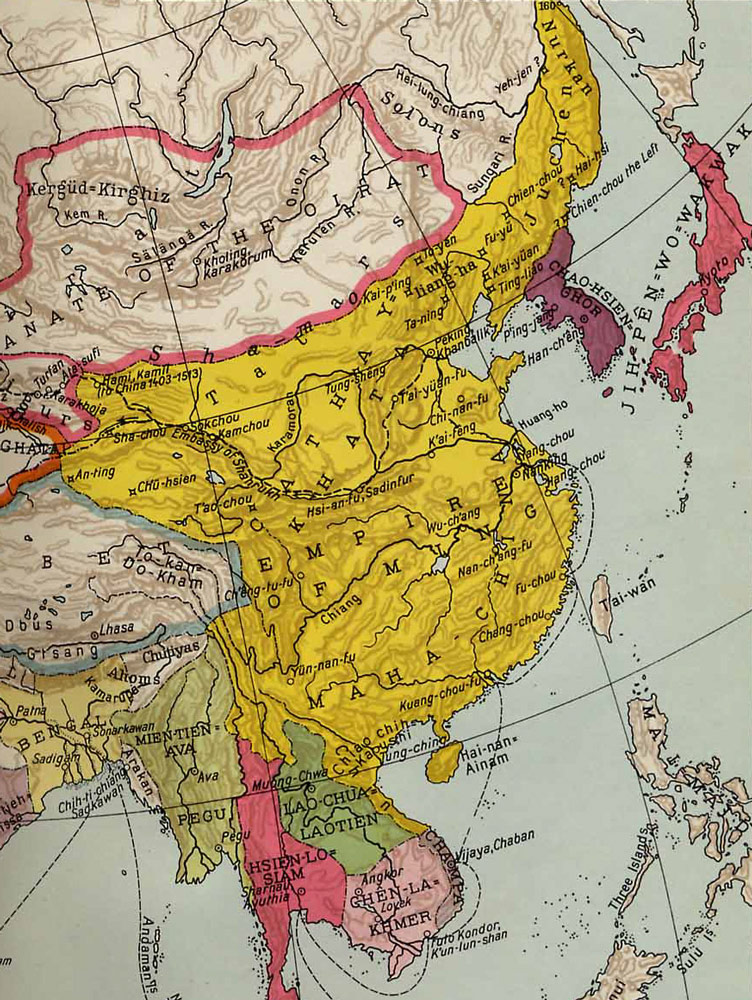 Since learning and knowledge was highly respected in the Ming Dynasty, the era was well documented. Geography was no exception and was well-written records were maintained. The tradition of Chinese geography documentation started in the fifth century BC and by the time of the Ming Dynasty it was quite advanced. In addition to this, the printing technology of the era allowed the printing of detailed and descriptive maps and books. Many of these maps and books survived and have given us much knowledge about the Ming geographers and cartographers.
Since learning and knowledge was highly respected in the Ming Dynasty, the era was well documented. Geography was no exception and was well-written records were maintained. The tradition of Chinese geography documentation started in the fifth century BC and by the time of the Ming Dynasty it was quite advanced. In addition to this, the printing technology of the era allowed the printing of detailed and descriptive maps and books. Many of these maps and books survived and have given us much knowledge about the Ming geographers and cartographers.
The tradition of classification of Chinese maps was by specific titles which were expressed as short phrases. An example of this is the map titled ‘Map of Capitals of Historical Emperors and Kings in the Nine Provinces of the Yu Gong’.
Li Zemin’s Shengjiao Guangbei Tu
One of the master pieces in cartography, the Shengjiao Guangbei Tu, based on the Mongols by Li Zemin was lost. Fortunately, derivative works based on this have survived, which has helped understand what it might have been about. Ming Dynasty maps of a later period too, were based on the map by Li Zemin.
Qingjun’s Gianglun Jiangli Tu
The map Guanglun Jiangli Tu, made by the Zen monk Qingjun, who lived in the early Ming period, did not survive. However a modified edition of the map has survived. The map was updated by Yan Jie, to include Ming names, as the original contained place names of the Mongol Yuan Dynasty, which came after the Ming Dynasty. These maps included information on Mongolia, Southeast Asia as well as sea routes.
Later Ming Era Maps
In the later Ming era, more than 40 maps were published and these were more advanced with grid references and a systematic method of representing mountains, rivers, cities, towns, roads, borders etc. Some of them also showed the sea routes along the coast of China, Southeast Asia, India, and Africa. Some of the latter period maps had an accent on cultural information. In some of the maps, grid lines were absent and in its place there was information and illustrations on mythical places and exotic foreign people and places etc.
Ming Dynasty geography was well developed and flourished. Many of the maps and treatise have survived, leaving us with valuable knowledge of Chinese geography during the Ming Dynasty.